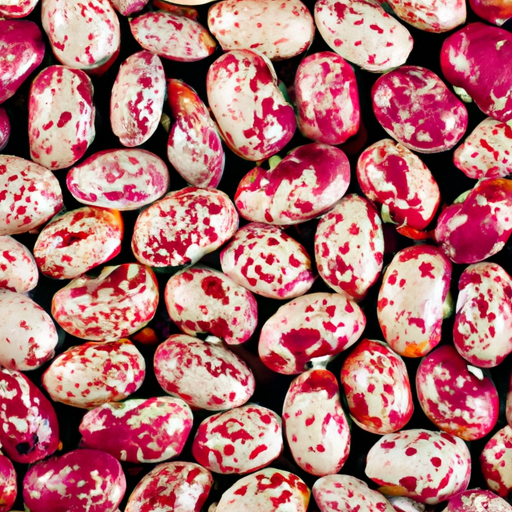Exploring the Earthy Delights of Roman Beans
When it comes to versatile and nutritious legumes, one cannot overlook the humble yet flavorsome Roman bean. Also known as “borlotti” or “cranberry beans,” these beans have been a staple in Italian cuisine for centuries, offering a delightful mix of taste, texture, and health benefits. Whether you’re a seasoned cook or a cooking enthusiast, the world of Roman beans is undoubtedly worth exploring!
Taste and Culinary Uses
Roman beans are renowned for their delicate flavor profile, which strikes a harmonious balance between nutty, creamy, and earthy notes. Their tender yet meaty texture makes them a popular choice for various recipes, adding both substance and depth to dishes.
These versatile beans are often enjoyed in both fresh and dried forms. Fresh Roman beans have a mildly sweet taste and a slightly crisp texture, making them a delightful addition to salads, soups, and stews. On the other hand, dried Roman beans develop a creamier texture when cooked, perfect for creating hearty bean soups, rustic pasta dishes, and braised bean recipes such as the famous Tuscan ribollita.
Nutritional Value
In addition to their remarkable flavor, Roman beans pack quite a nutritional punch. They are an excellent source of plant-based protein, making them a great option for vegetarians and vegans. These beans are also rich in dietary fiber, promoting digestive health and providing a feeling of fullness.
Furthermore, Roman beans are loaded with essential minerals, including iron, potassium, and magnesium. Iron is crucial for maintaining healthy blood function, while potassium helps regulate blood pressure and supports heart health. Additionally, magnesium contributes to bone health and assists in various enzymatic reactions within the body.
Fun Facts and History
The origin of Roman beans can be traced back to South America, where they have been cultivated for over 8,000 years. It wasn’t until the 16th century that Italian explorers brought these beans from the New World to Europe. Since then, Roman beans have become a beloved ingredient in Italian kitchens, particularly in Central and Northern Italy.
The characteristic maroon-speckled appearance of the dried Roman beans, resembling cranberries, gave rise to one of their common names, “cranberry beans.” However, they are more commonly referred to as “borlotti beans” in Italy, derived from the word “borlotto.” This name pays homage to the regions of well-known cultivation, such as the Borlotto di Vigevano, Borlotto di Pecetto, and Borlotto di Saluggia.
Final Thoughts
Roman beans offer a delightful combination of taste, texture, and nutritional benefits that make them a worthy addition to any cook’s pantry. Whether used in traditional Italian recipes or fused with international flavors, these beans have the power to transform any dish into a comforting and nourishing culinary experience. So go ahead, embrace the versatility of Roman beans, and let your creativity soar in the kitchen!
Additional Resources:
Please note that the health benefits mentioned here are for informational purposes only and should not replace professional medical advice.
Roman Beans
Origin: Roman beans, also known as Borlotti beans, originated in Italy. They have been cultivated in the region for over 2,000 years and are now grown in several countries around the world.
Common Uses: Roman beans are commonly used in Italian cuisine, particularly in dishes like pasta e fagioli (pasta and beans) and minestrone soup. They have a creamy texture when cooked, making them suitable for stews, salads, and casseroles. Roman beans are also often used in bean dips and spreads.
Nutritional Benefits: Roman beans are a good source of plant-based protein, dietary fiber, and various vitamins and minerals. They are low in fat and sodium and contain no cholesterol. One cup of cooked Roman beans provides approximately 225 calories, 15 grams of protein, 15 grams of dietary fiber, and various nutrients such as iron, magnesium, and folate.
Unique Properties: Unlike other beans, Roman beans have a beautiful speckled appearance with a cream-colored base and red or maroon streaks. The beans have a mild, nutty flavor and a slightly creamy texture when cooked. They are often used in soups and stews due to their ability to hold their shape and texture during cooking.
Historical Significance: Roman beans have a long history and were important in ancient Roman cuisine. They were also cultivated by the indigenous people in South and Central America long before European exploration. Today, Roman beans are popular in many countries and are considered a staple in Italian cooking.




Use the share button below if you liked it.
It makes me smile, when I see it.